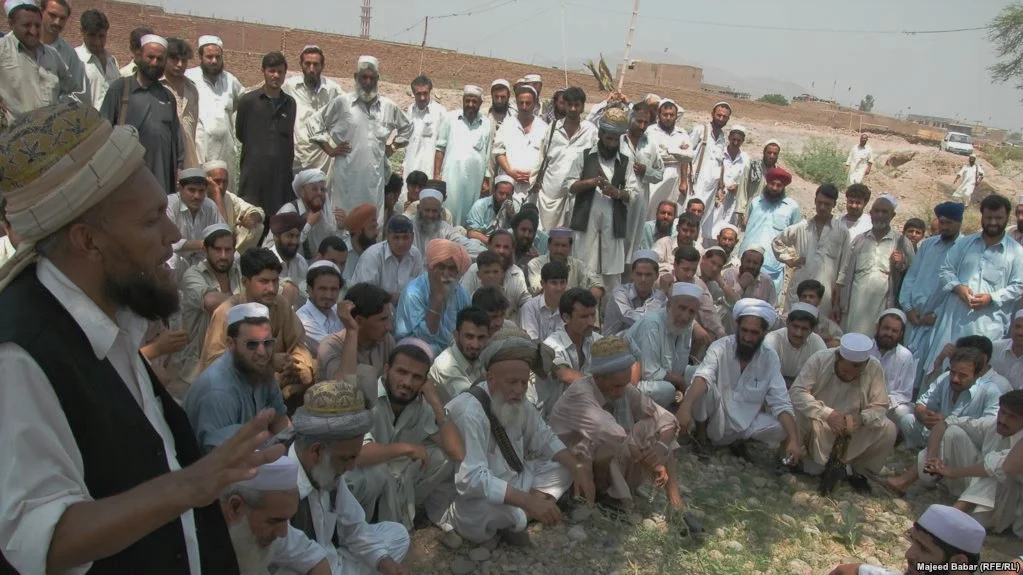The experiences of American soldiers deployed to Iraq and Afghanistan, sometimes over and over again, are central to this story, including consideration of the lasting impact of their time abroad. American culture is already rife with conversations about post-traumatic stress, veterans’ services, and treatments following deployments. Unfortunately, the voice of the veterans themselves is seldom heard with clarity in these conversations.
#Reviewing The Hooligans of Kandahar
No general would ever suggest you read this book, and maybe that is why you should make time to do it. The first person perspective offered by Kassabian is unpolished, irreverent, and told from a soldier’s perspective. In a world full of strategic challenges it is, in my view, a good thing for those making the decisions and grappling with the consequences to get an appreciation for what the greatest of plans looks like when 18-year-old Americans are sent forth to implement them.
Political Legitimacy: Why We Are Failing in Afghanistan
Having squandered earlier opportunities, the United States now faces a conundrum in Afghanistan, where neither staying nor going will likely produce a favorable outcome to its Afghanistan adventure. Most likely, America will soldier on in Afghanistan, following flawed strategies until some unexpected event or developing trend—such as American retreat from global leadership—causes Washington policymakers to conclude that America has done enough.
#Reviewing Welcome to FOB Haiku
An interesting read, but it will not be sharing space on my shelf of favorites, alongside other war poets such as Brian Turner, Marvin Bell, and Wilfred Owens. The book may, however, appeal to the casual poetry reader or to those trying a cross sample of the writing generated by individuals who fought this century’s wars in Iraq and Afghanistan.
#Reviewing Taliban Narratives
Taliban Narratives, by Professor Thomas Johnson, explores Taliban and U.S. communication cultures by analyzing narratives, propaganda, and stories between 2001-2011. Johnson decodes the Taliban’s master narrative, information operations, target audience, and their propaganda tools such as circulars, shabnamahs (night letters), internet accounts, graffiti, poetry, and chants, which he refers to as cultural artifacts. He argues the Taliban, unlike the U.S. and coalition forces in Afghanistan, have culturally relevant information closer to the values held by the local population. Aiming at changing the emotions and perception of people, Taliban campaigns target rural Afghans by focusing on local issues.
#Reviewing Taliban Narratives
Students of the Afghan conflict, information operations officers, public affairs professionals, diplomats, relief workers, and those working in the intelligence and psychological operations arenas would all be well served to have this reference close at hand. One can only hope the failures Johnson cites are not repeated, and, if the war cannot be won by the West, perhaps this book can help the Afghans find an honorable and enduring conclusion.
Turning the Corner in Afghanistan
In the November/December 2017 issue of Foreign Affairs, Kosh Sadat and Stanley McChrystal defended the ongoing state-building and counterinsurgency project in Afghanistan as both right and necessary. In doing so, however, they revived the fallacies that have long obscured problematic aspects of the US-led campaign in that country. Proponents of the open-ended commitments to Afghanistan have long misrepresented the governance and security issues in Afghanistan as merely technical, albeit complicated, and overstated the ability of American means to remedy such issues. Like others before them, Sadat and McChrystal have addressed neither the complex prerequisites to state building nor the consequences of ongoing American political ambivalence towards the war. Either one of these factors alone could derail US aims. The fact that both are present should give policymakers pause.
A Peace Dilemma: Afghan Peace Talks Require a New Approach
#Reviewing Lifting the Fog of Peace
When discussing the struggles of the U.S. military in the early years of the Iraq War, Davidson uses the phrase “adapting without winning,” a formulation that surely continues to accurately describe the American experience of the post-9/11 wars. Despite the optimistic characterizations on the dust jacket that frame this book as a manual for how to succeed at counterinsurgency, though, Lifting the Fog of Peace sounds a note of caution about the gap between tactical adaptation and strategic success, even as it lauds the U.S. military for the evolution of its lesson-learning apparatus.
Cosmic Thinking: A Ptolemaic View of Military Decisions
Operational and strategic level leaders cannot get caught in the rapid pace of tactics, but neither can they ignore the fact that decisions at the tactical level must proceed at the pace demanded by the situation. When operational and strategic leaders increase the pace of decision-making, it can lead to a chasing of the bright and shiny object mentality. Decisions in these orbits include a set of dialogues and tend to be iterative. Further, leaders at all levels must consider the complexity of decision making at each level above and below them.
#Reviewing Our Latest Longest War
This book is a must for any student, policymaker, or practitioner seeking to better understand America’s war in Afghanistan––even if that student disagrees with its conclusions. As America seems to be on the verge of stepping into the Afghan breech yet again, this book should serve as warning to the over-zealous or those prone to hubris. Moreover, Our Latest Longest War must be included in any pre-deployment reading list for any soldier, diplomat, or aid worker heading to Afghanistan.
Bargaining Across Levels: Divide and Conquer
It is time that the United States and its allies plan for the long haul of supporting the Government of Afghanistan instead of remaining fixated on the immediate crisis at hand. For far too long the international community has tried and repeatedly failed to create a durable peace on a Western timeline. By dividing the insurgency into smaller manageable groups, pressuring amenable Afghan leaders, and aligning the win sets across all levels, the United States may eventually help the Government of Afghanistan bargain a tenable peace and achieve an honorable exit from its longest war.
The Case for AF-PAK Federally Administered Tribal Areas
The present center of gravity in Afghanistan is the Taliban subsystem of the greater Pashtun social system enabled by Pakistani elites. The insurgency is effectively wielding power to meet their independence and removal of foreign occupation objectives. Re-analyzing the critical factors and engaging the critical vulnerability of ineffective governance forces nonlinear change. Ineffective governance by all relevant actors is mitigated by transforming Afghanistan into a federal system of government with semi-autonomous areas. This includes political accommodation, ethnic nationalism, financial incentive structures, and power sharing.
War Isn't Precise or Predictable — It's Barbaric, Chaotic, and Ugly
Democracy will always benefit from the requirement to persuade the public––to gain consensus on, and legitimacy for, the use of force in order to defend or pursue national interests. If this opportunity is ceded for fear of being unconvincing, or in fear of explaining the ugliness it will entail, then a society will find itself bereft of clarity in the political objective and therefore unable to craft strategy appropriate to the task at hand. Furthermore, the failure to have these discussions leaves the populace underprepared for the brutality and sacrifice that war may require.
The Wages of War Without Strategy
In this––our final installment––we appeal to each element of the Clausewitzian Trinity to do its part. To remain silent as practitioners of policy and war, we believe, would perpetuate the betrayal of those troops and civilians––American and foreign––who have made the ultimate sacrifice for reasons this country still struggles to articulate.
What Does Victory Look Like in Afghanistan?
More U.S. troops are likely headed back to Afghanistan soon, while the Trump Administration is also now considering withdrawal. Before either option—or anything in between—is considered, the U.S. needs to decide what version of victory it wants before it can decide on a strategy, but debates often consider strategies in isolation, and this is a mistake. Strategies must be judged relative to the realistic alternatives.
#Reviewing War Machine
War Machine is a welcome (if failed) satire that will undoubtedly become politicized by those with no skin in the game. At the same time, it will be understood (if not agreed with) by those who have served overseas. This movie brings satire back to institutions that demand it, reminding us that questioning the powers that be is not only right but necessary.
The Wages of War Without Strategy
War and violence decoupled from strategy and policy—or worse yet, mistaken for strategy and policy—have contributed to perpetual war, or what has seemed like 15 years of “Groundhog War.” In its wars since 11 September 2001, the United States has arguably cultivated the best-equipped, most capable, and fully seasoned combat forces in remembered history. They attack, kill, capture, and win battles with great nimbleness and strength. But absent strategy, these victories are fleeting. Divorced from political objectives, successful tactics are without meaning.
#Reflections on War: The Day bin Laden Died
At this point it has become a cliché. Everyone knows where he or she was when JFK was shot. The same goes for 9/11. Such moments forge historic waypoints for our lives and occasion us to ask broad questions: What does it mean to be an American? What is the state of U.S. power in the world? Or, more simply, are we truly safe? Recently, I’ve been thinking back to another milestone – May 2, 2011 - the raid in Abbottabad, and killing of Osama bin Laden. It has now been six years. For most Americans, May 2 lacks the emotional power of a December 7 or September 11. This may reflect a human tendency to internalize and remember tragedy over triumph. Nevertheless, I submit that we overlooked something in our collective response to the bin Laden killing. Furthermore, the national conversation failed to address some stark questions surrounding not only Osama’s death, but also its implications for the more general application of military force. As we trudge along with what will be the longest shooting war in our nation’s history – 15 years, 5 months – my thoughts drift back to that Monday morning.
The Price of Payload: Light Attack for Pennies on the Pound
Whether trading speed for altitude or cost for capability, military aviation requires compromise. The current trend in United States airpower has been to acquire fewer aircraft with an emphasis on the ability to complete a wide variety of missions. Fifth generation aircraft such as the F-22 and F-35 further blur the lines of traditionally distinct roles such as air superiority and strike capability. The ability to succeed in this wide variety of missions comes at a very real price.This trade off between multiple missions and operating cost has come sharply into focus as coalition forces have launched repeated airstrikes against the Islamic State. This increased operational pace comes at a time that the number of planes available to the USAF is at an all-time low. This is not just an issue of budget sequestration and maintenance, but of acquisition. The USAF acquired more aircraft in the early 1950s than it did from 1956 to 2011.[i] The repeated delays in acquisition of the F-35 has left the United States in a tenuous position with regard to airpower readiness – a shrinking number of aging planes are required to conduct more strikes in a permissive environment at a high operating cost.





















